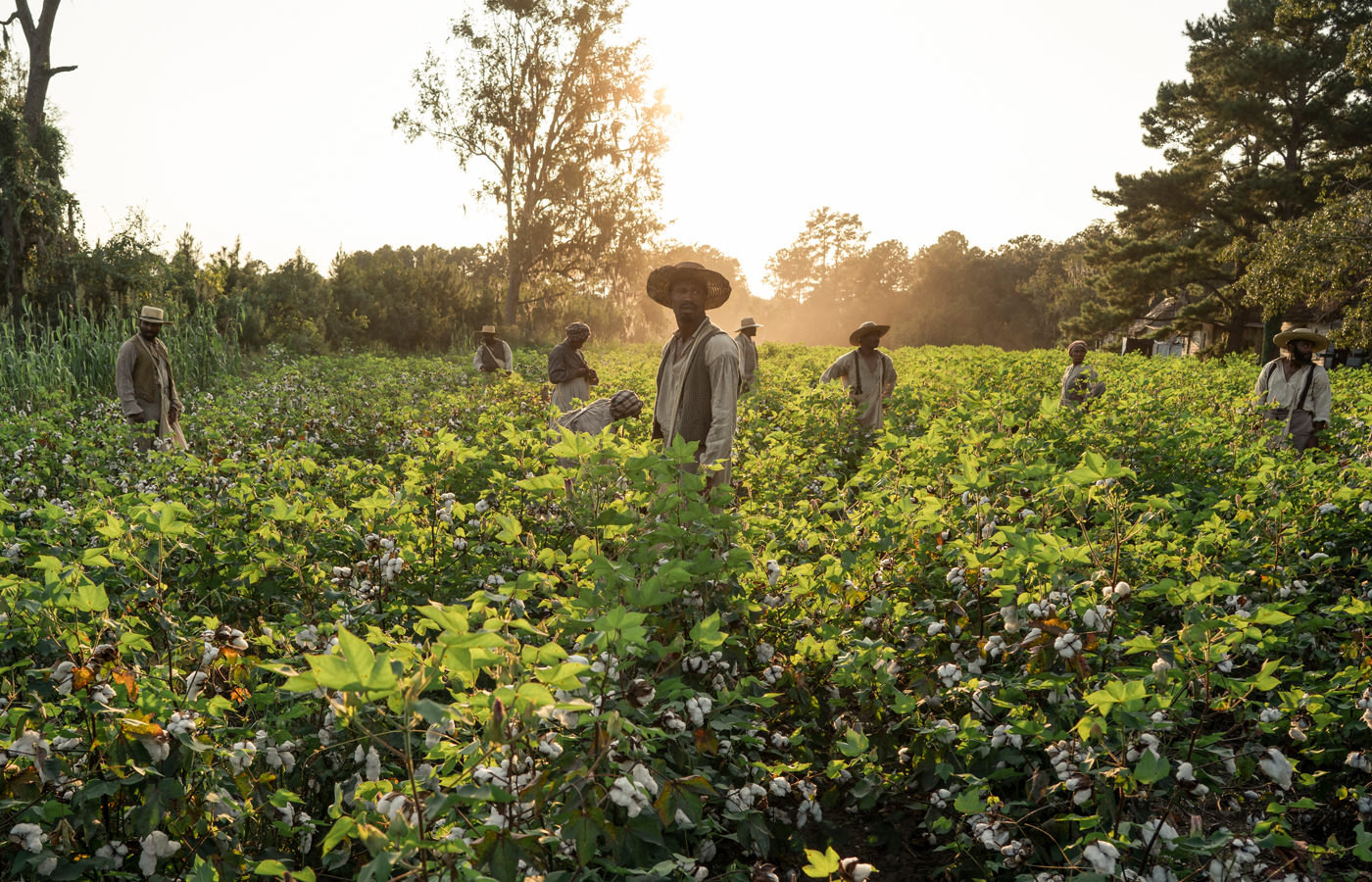Barry Jenkins and longtime collaborator James Laxton, ASC travel the road less taken for Amazon’s new limited series The Underground Railroad.
by Valentina Valentini / Photos by Atsushi Nishijima & Kyle Kaplan / Amazon Studios
In one of the first frames of the new Amazon series The Underground Railroad, Cora – deftly played by Thuso Mbedu in her first American role – stares straight into the camera while her voiceover narrates the seedlings of the story. It’s a powerful moment, and though we’re only seconds into a 10-episode series, it forces you to pay attention.
The visual motif repeats throughout The Underground Railroad, urging the viewer to look at the story’s characters – enslaved African Americans on a southern plantation; well-dressed Black men and women on display for white people’s manipulation; free-born and enslaved escapees on a black-owned farm – by panning the camera across their mural-like setups, all of them staring back into the camera. Teetering on (if not breaking entirely) the fourth wall is a risky move, but Director of Photography James Laxton, ASC, thinks Writer/Director Barry Jenkins has earned that license.
“Putting the camera inside the characters’ minds invites us into their journeys,” describes Laxton, who met Jenkins studying film at Florida State University nearly 20 years ago. “A different filmmaker might feel too shy to do that, but it’s something that Barry does very well – riding this fine line of being stylistic and maintaining a specific visual language.”
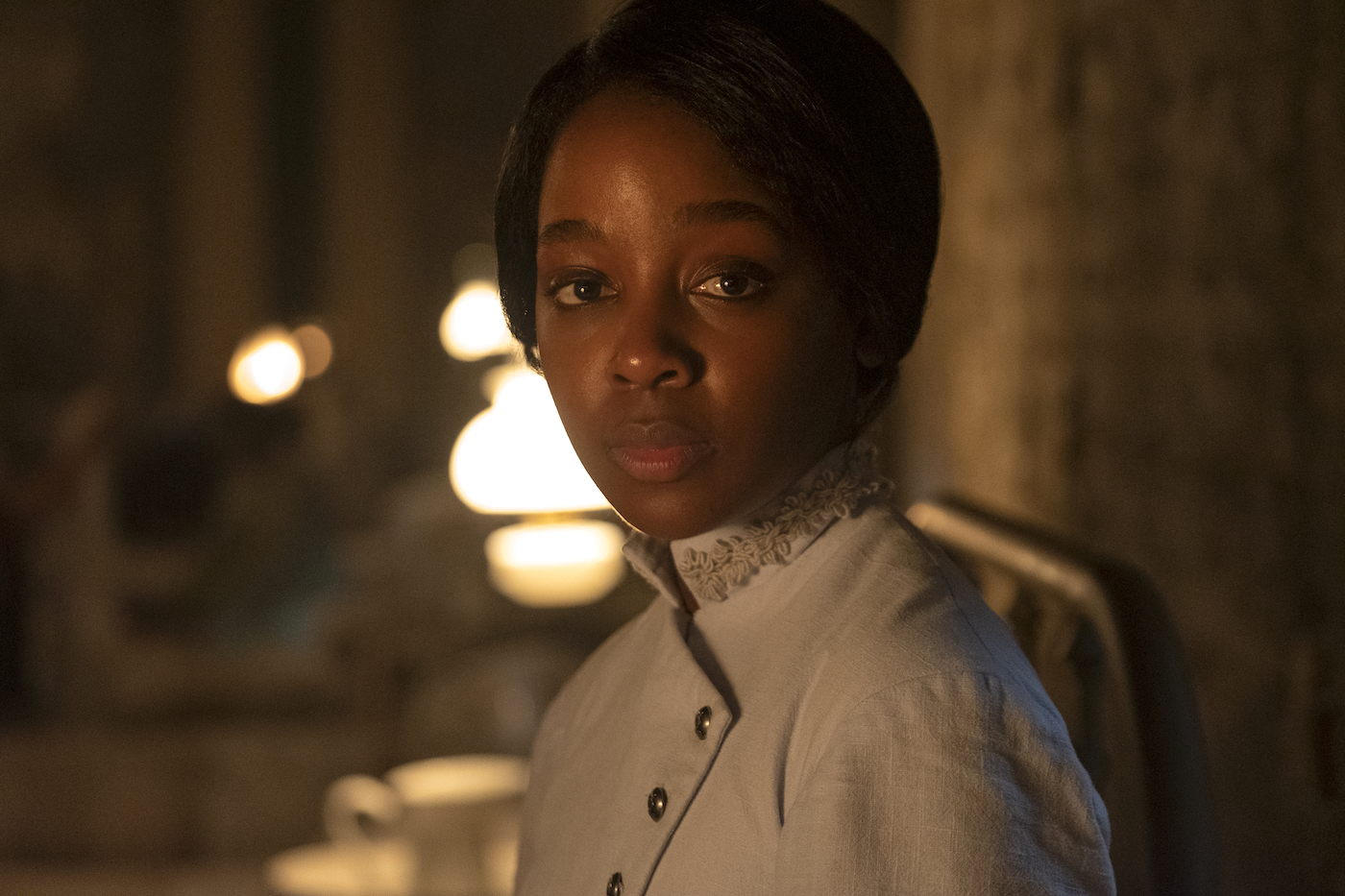
The Underground Railroad is Jenkins’ adaptation of Colson Whitehead’s Pulitzer Prize-winning novel that builds a fictional world around the real-life 19th-century underground railroad – a network of subterranean passages traveled by foot that allowed enslaved people to escape to free states and Canada. The script, written by Jenkins, Jackie Hoyt, Nathan C. Parker, Allison Davis, Adrienne Rush, and Jihan Crowther, with Jenkins directing all 10 episodes, centers on Cora’s journey north, as she tries to escape the slave catcher Ridgeway (Joel Edgerton) and his child sidekick, Homer (Chase W. Dillon).
It’s a story filled with “hard imagery,” a term Jenkins uses to describe the horrors, atrocities, and brutality his ancestors endured. And yet there is also textural softness throughout – the sun caressing breeze-touched curtains, yellow swathes of light covering fluffy green fields, black faces illuminated only by flickering candlelight. Even in the most violent scenes, flames dance and smoke billows; grey mist swirls and dissipates around scorched-black trees. Laxton, who’d received the novel from Jenkins years before production began, reminds us with his camera and lighting that enslaved people fell in love, had families and friendships, and built communities, despite all they were forced to endure.
Laxton, who used the ALEXA LF and ALEXA Mini LF and did extensive testing with Panavision’s Dan Sasaki to tweak the Primo 70 series and T-Series Anamorphics to his specifications, shares that, “our job as filmmakers was to paint with a fine brush nuanced scenes of Cora falling in love or having fun at a corn-shucking festival on Valentine Farm.”
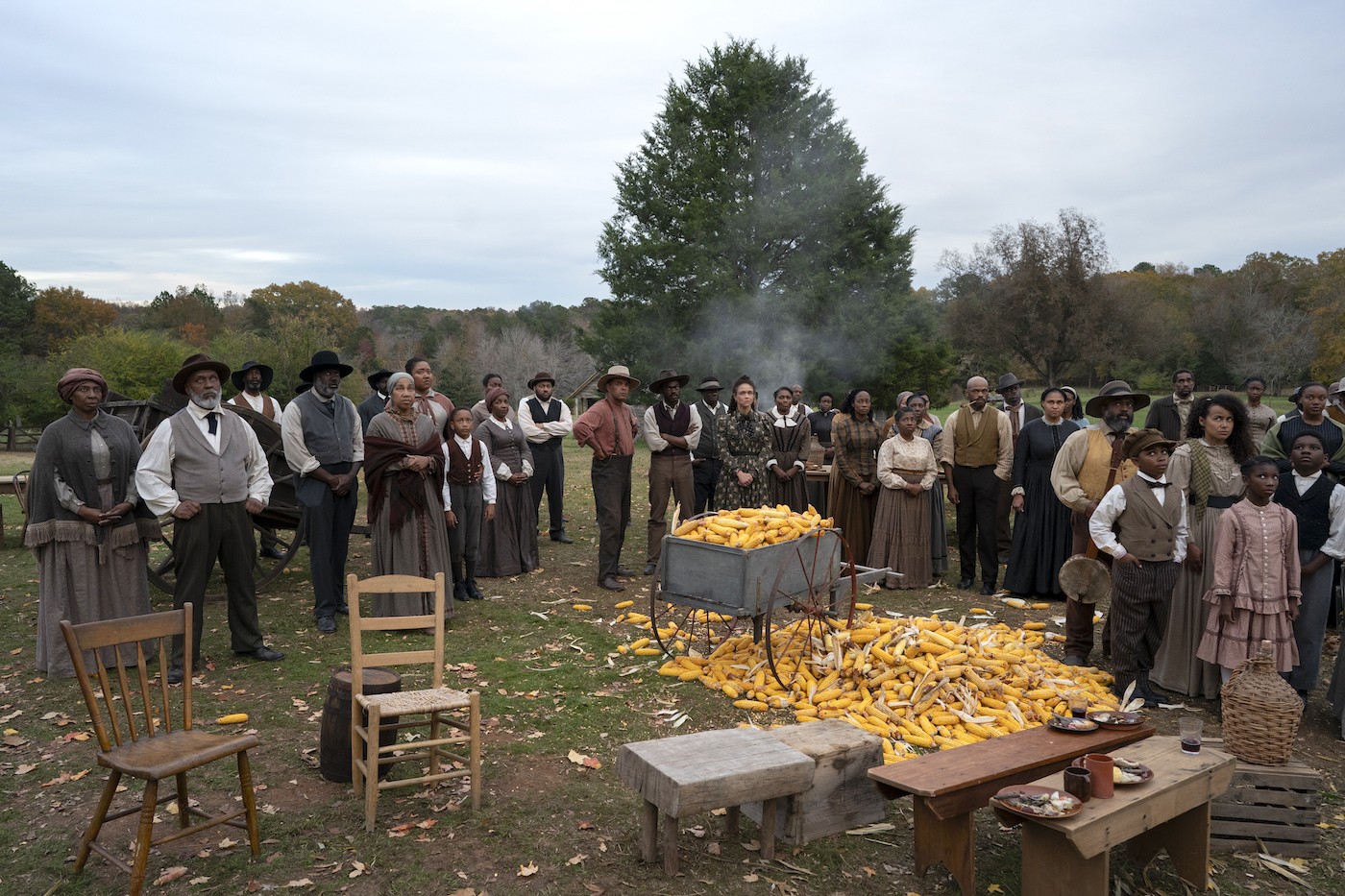
Though the whole series is shot in Georgia, where the first and last episodes take place on the Randall Plantation, Cora’s journey takes her to South Carolina, North Carolina, Tennessee, and Indiana. There’s a challenge inherent with shooting five states in one, and Laxton and Jenkins both credit the art direction team and Production Designer Mark Friedberg, who also designed Jenkins’ Oscar-winning If Beale Street Could Talk and many other distinctive features, including Joker, Synecdoche, New York, and Far From Heaven.
“Coming out of the writers’ room and into prep with James,” Jenkins adds, “We knew that this was a television show, [but really] it’s a road movie. So, every time Cora reaches a new state, we have full creative license to completely reorient the visual language, whether it be the color or [framing, et cetera].”
It was no small task to create entirely disparate locales using existing locations in Georgia, but Laxton and his team, cognizant that new characters and new spaces alone wouldn’t cut it, also helped to build separate visual worlds by treating the color palette differently in each state and creating a unique LUT for each episode. Starting with Chapter 1, “Georgia,” Laxton and his longtime colorist, Alex Bickel, at New York City-based Color Collective, used a Kodak emulation; for Chapter 2, “South Carolina,” it was an Anscochrome LUT with E6 chemicals to emulate the same combination of stock and processing Still Photographer Gordon Parks used in his Segregation Story series. Laxton says “this one was special, as it had never been used before.”
Chapter 3 and Chapter 7, both set in North Carolina, used a Fuji Film LUT; Chapter 4, “The Great Spirit” was Ektachrome; “Tennessee: Exodus” was three-strip Technicolor with a modified white point based on Erwin Olaf’s Keyhole series; and for “Tennessee Proverbs,” back to Ektachrome. Chapter 8 “Indiana: Autumn” was Technicolor three-strip again but modified to emulate blues and greens in reference to photographer Jacques Henri Lartigue; “Indiana: Winter” was Agfa; and finally, for Chapter 10, “Mabel,” the filmmakers used two different LUT’s – the first half of the episode was Bleached Kodak, and the second half was Ektachrome with inkier blacks. Because of Laxton and Jenkins’ feature-film background, they were keen to preserve a cinematic language even while working on a TV series together for the first time. And Bickel, who has colored all of Laxton’s features, helped to maintain a visual through-line in post.
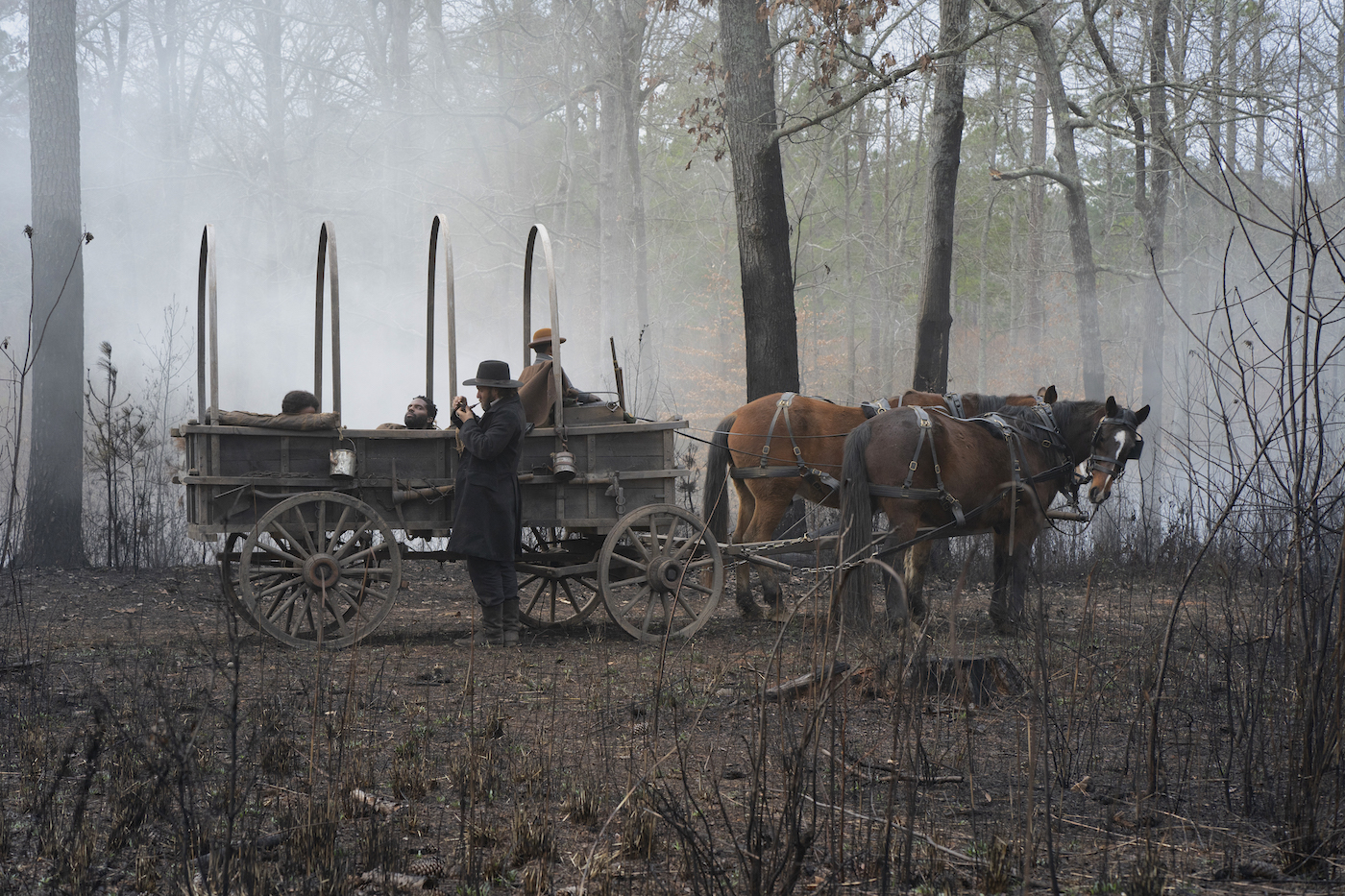
“Television is so cinematic now,” adds Jenkins, “so the distinction isn’t as sharp as it once was. But we still wanted to step into this realm and put our footprint on it while understanding that it will be viewed on a smaller [screen]. There’s a certain amount of control the audience has when watching TV, there are also variations in image quality and color representation, so we had to think of it from a technical standpoint to decide that we were not making 10 individual movies but rather telling a story that threads from beginning to end.”
Laxton’s conversations with Jenkins were often about the subtlety between the truth of American slavery mixed with the symbolism of the story’s narrative structure, like the underground railroad being an actual steam engine running through tunnels. Laxton grew up reading Joseph Campbell and other mythology writers; he watched films like Akira Kurosawa’s Rashomon and The Wizard of Oz, which use myth as a motif. He says these stories he watched as a child helped to shape the artist he became.
“Sometimes I feel like myths can be more impactful than history,” the Oscar nominee describes. “And the language we’re using with this production, within cinematography specifically, is to touch on that heightened sensibility with a powerful arc that somewhere in the frame we always will have a truth about our history as Americans. The horrors Cora experiences are always going to be omnipresent – no matter what I do with the camera, we are going to see those atrocities on screen. We thought about how to shape those moments to make Cora’s journey feel richer, to have a larger spectrum of emotional connection than just distilling it down to, ‘This was slavery in America.’”
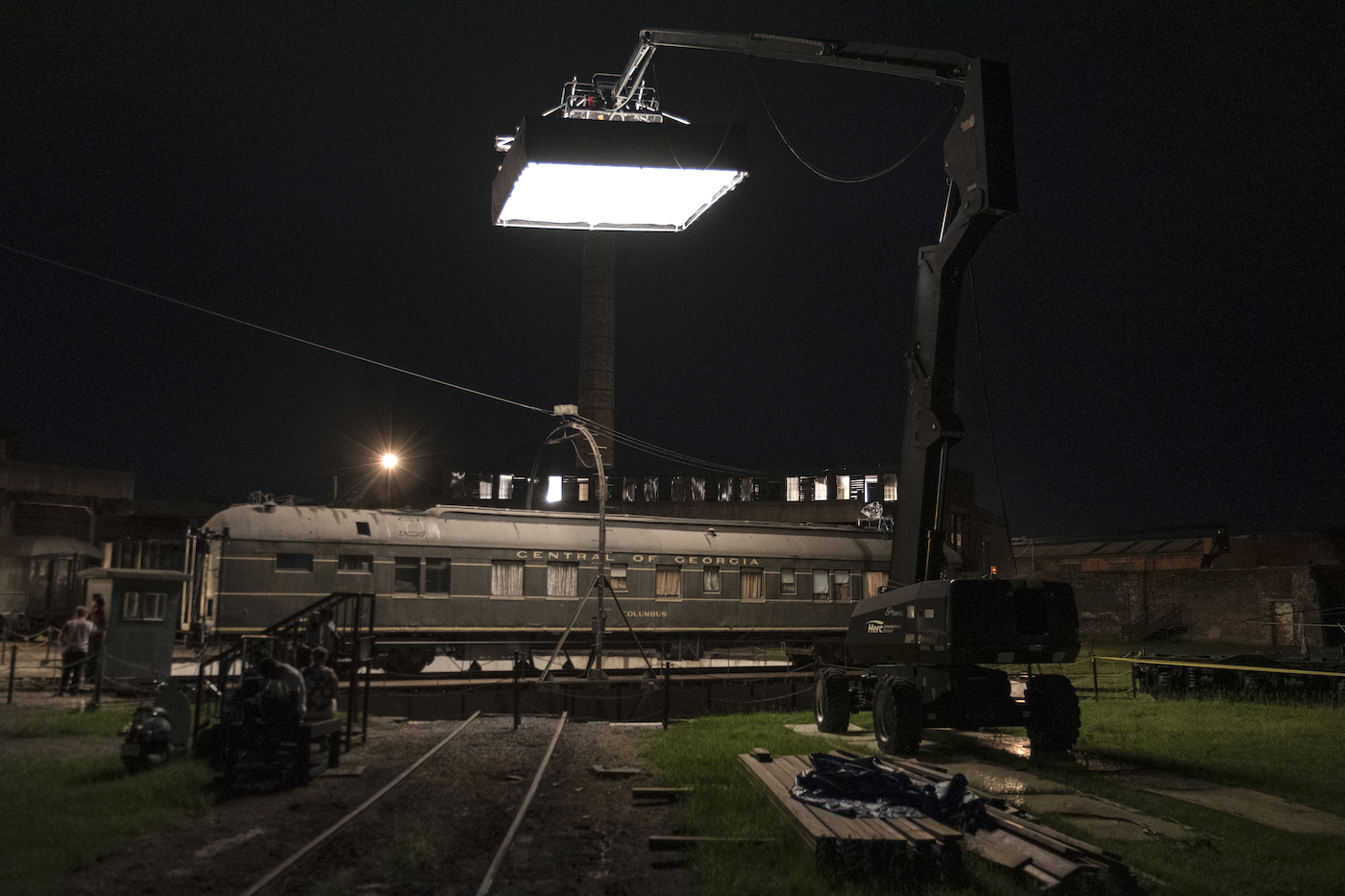
Though the show’s name suggests the viewer might be literally “underground and on a train,” only a quarter of the scenes take place there. Yet Friedberg’s team still built an entire tunnel above ground as if it were below ground. And instead of building a train on a soundstage, the designer went to the source – the Georgia State Railroad Museum in Savannah allowed filming on period-specific trains on a 150-foot section of their private train track. Safety and control were paramount, and this provided both. Friedberg then built the tunnel around those train tracks using both real rocks and foam.
Costume designer Caroline Eselin, who worked on Moonlight and If Beale Street Could Talk, tested textures and colors with Laxton and Friedberg early on, wanting to make sure her looks, which had to jump around and blend styles from the 1830s to the early 20th century, tonally matched the narrative, as well as the goals of the camera and design teams. Jenkins says he didn’t want to use other shows as visual references, as it was all about Cora’s journey and the shift in genres present in Whitehead’s book. In that respect, still photographs were the prime visual references, as evidenced in the LUT’s. The first images shown to Eselin were from Parks’ Segregation Story.
“Our Black women at the Griffin Institute of Negro Progress in South Carolina wear an institutional dress in their daily work and schooling activities,” Eselin recalls. “I showed James and Barry blue and green fabric swatches only for the dresses to honor and achieve those teals and greens in the photographs. In the first episode in Georgia, we start with straightforward 1850s as it’s written in the novel – the costumes were sun-bleached, worn, washed, and rewashed with a muted color palette on our enslaved people of the plantation, which was a terrible, fearful place. We wanted a clear difference of perceived optimism jumping to the 1880s future of South Carolina. For North Carolina, which comes next in Cora’s journey, we used an 1830s silhouette with rough fabrics, almost like burlap for the white characters, and a much darker color palette to mark a regression from South Carolina.”
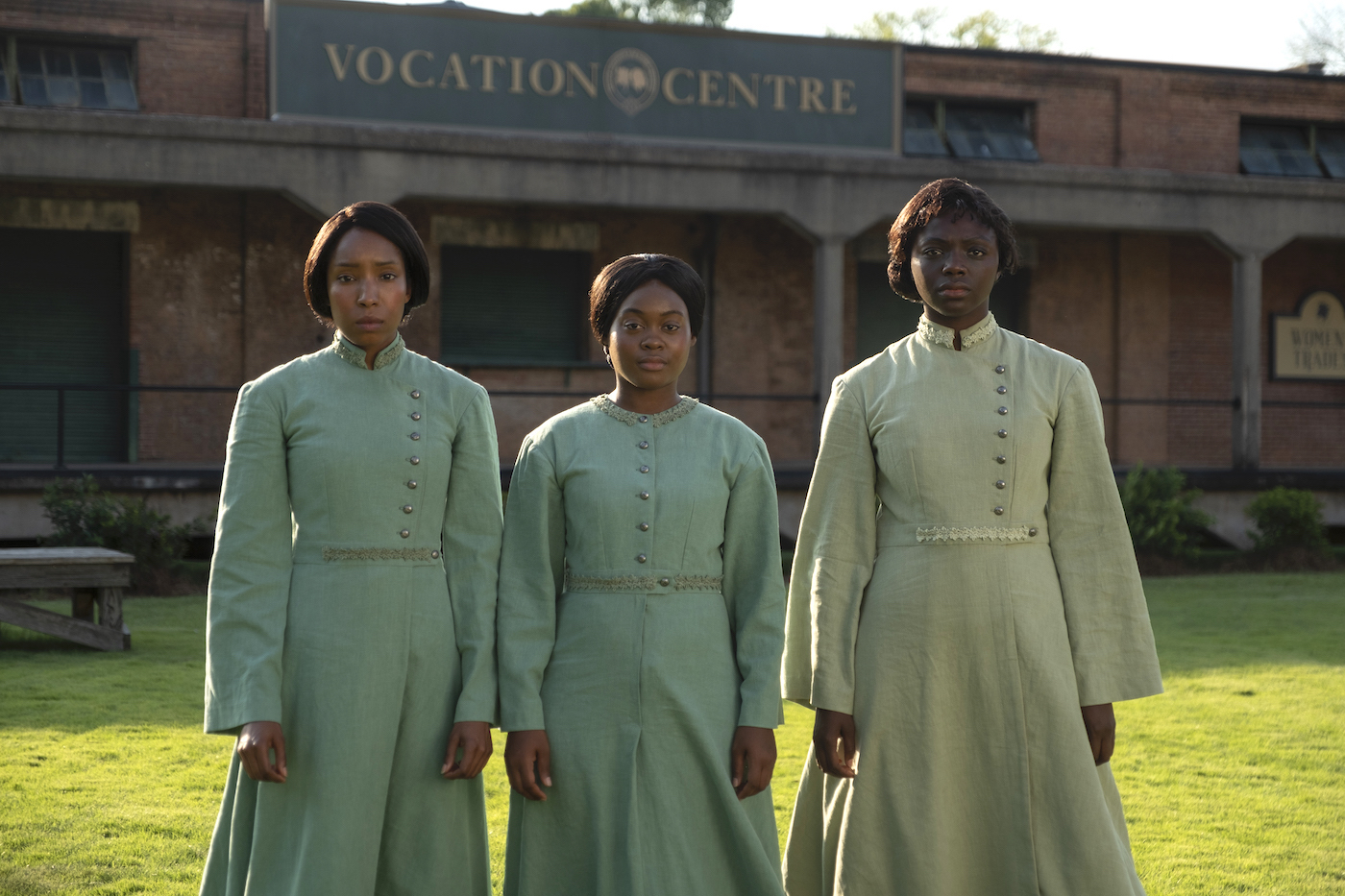
Cora’s consciousness provides the narrative framework, but the 1850s is the real-world period within which the show takes place, and Eselin often used hybrid periods and time travel for her looks to complement Jenkins’ overall aesthetic.
“All our periods and costume choices are there for a reason,” she continues, explaining that on Valentine Farm in Indiana, the Black community hailed from all over the southern states. “In that episode, we had some earlier period silhouettes, but mostly we put our Black population in the future – the 1880s to the turn of the century. The farm is a forward-thinking community; we wanted it to be lush and beautiful and to also have a feeling of optimism – florals and prints, jewel tones, and lived-in feelings of freedom and prosperity. We kept our white population in the 1850s only [to make it clear they were stuck in the past].”
To keep with the authenticity of enslaved Americans’ surroundings, Laxton chose to light scenes as if there was no electricity in Georgia and Indiana but to add electricity into the look of South Carolina and the big train stations. Chief Lighting Technician Kiva Knight had the challenge of lighting a series often grounded in the absence of light. “I felt this show pushed the envelope in terms of how dark we could go with exposure,” offers Knight, who worked on Jenkins’ two other features. “This was the only show I’ve done where the majority was set pre-electricity for the bulk of the shoot. That meant we were relying solely on the moon, gas-powered lanterns, and fire as our motivational sources for night. Exterior day work was mostly natural light and bounce to augment.”
For scenes on the Randall Plantation and the Valentine Farm, where Knight and his team needed to light landscapes at night the size of a football field, an HMI Bebee light was the main backlight with a 1/8+ Green. To further bring out the environment in areas the Bebee wasn’t lighting, an 80-foot Condor with two ARRIMAXes with 1/8+ Green pushing through a five-by-ten frame of one-quarter grid was used. Knight would also place two 80-foot Condors with SkyPanel 360s in six-by-six chimeras with a quarter grid to sculpt and augment the light while moving around for coverage. Whenever possible his team would bring in an 18-by-18 Softbox that housed 28 Titan tubes, put through a quarter grid, and added some grading from the console to match the HMI’s. If there was fire, as in the nighttime party scene in Chapter 1, Knight augmented with ARRI SkyPanel S60s or Titan tubes in 8-pixel mode. Astera AX10 Pars were also used to light various parts of the background for exterior nights, which Knight likes as they’re battery-powered and controlled via wireless DMX.
“So often the camera is floating 360 degrees in this series,” Knight continues. “It’s par for the course with Barry to give the actors lots of room to perform. And there can’t be any waiting on us; if we bring something in to light with, it’s minimal – one or two quick things off the floor to make the talent shine, and that’s it. Our approach is to light from above or further away so that [everyone] has room to breathe.”
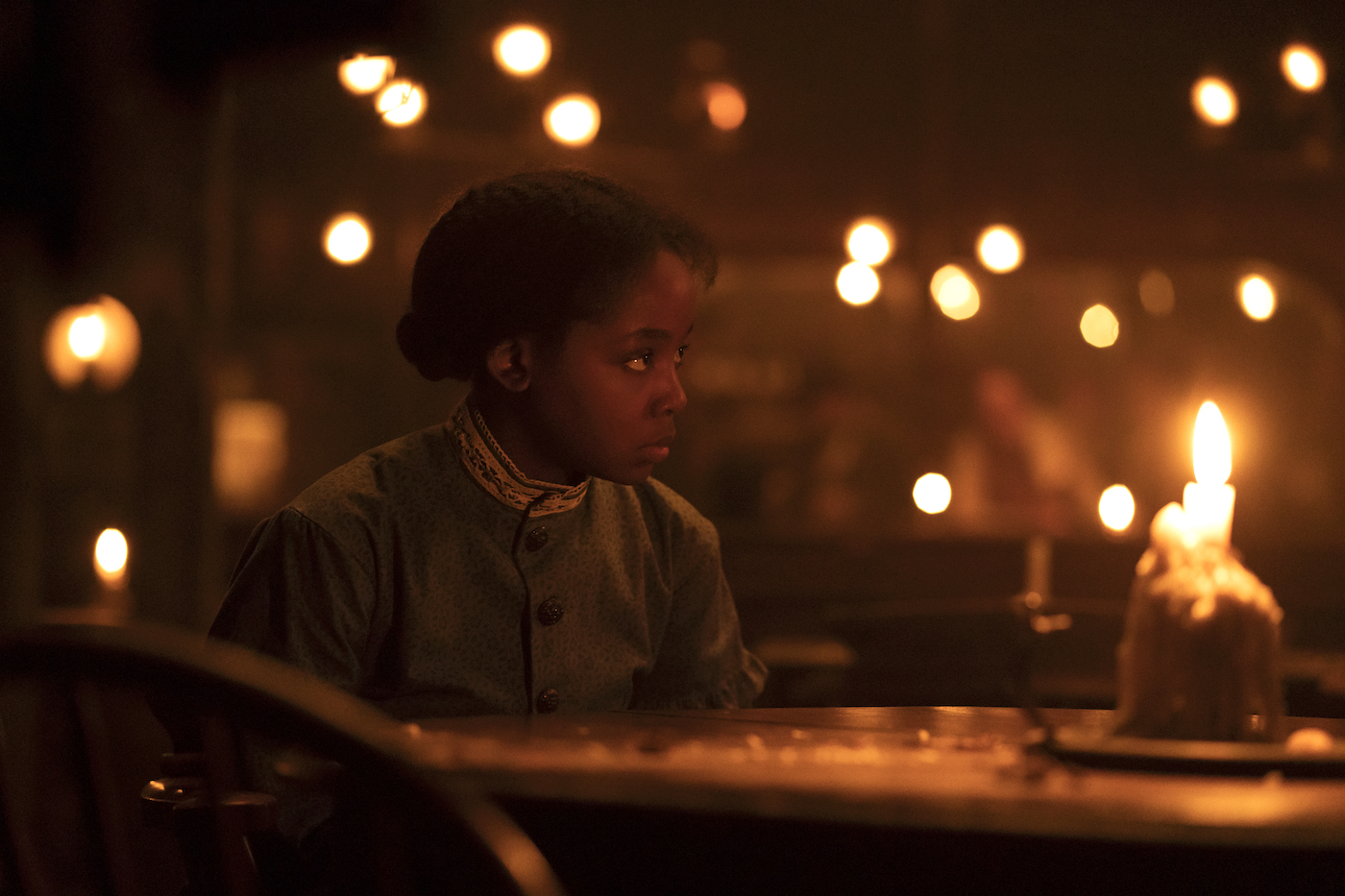
A-Camera/Steadicam Operator Jarrett Morgan, SOC, a native Georgian and new to Jenkins’ creative team, had a front-row seat to the director’s intimate style of filmmaking. Laxton’s directive for the camera movement came from the desire to minimize cuts and tricks, connect action characters and emotional through-lines, which he knew would (literally) fall on Morgan’s shoulders.
“Barry and James empower the whole crew to be emotionally invested,” describes Morgan, who operated on FX’s Atlanta for two seasons. “I was allowed the freedom to make my own choices about where I was going with the characters and what I was framing. Often, Barry would let a scene roll long past when he might have called cut, and those were the times where I did some of my best work. But, also, by allowing us to feel that emotion and go on that journey with a character, the horror we’re [portraying] in this story is truly visceral.”
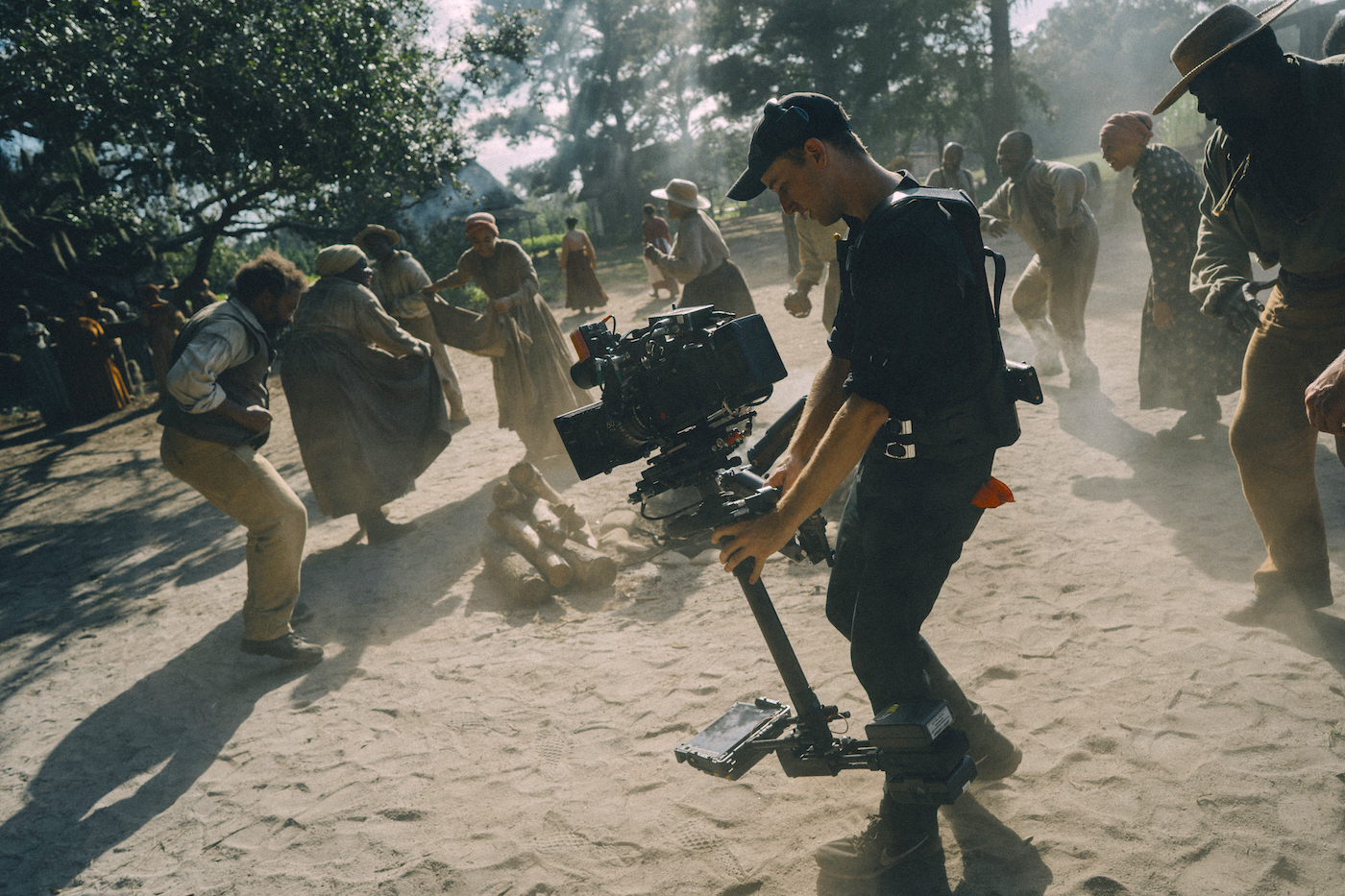
In one example in Chapter 5, Morgan was filming Joel Edgerton’s character, Ridgeway, on horseback on a Tennessee road, Dillon driving the wagon and horses with Mbedu in the back. In the scene, a man gallops by in the other direction and Ridgeway turns to ride after him, leaving the frame. As Ridgeway comes back, Morgan is following him on Steadicam, but no one hears cut, so they all keep going.
“I’ve never worked with an actor more aware than Joel,” recalls Morgan. “He knew to stay in character but also knew to pay attention to what I was doing. He was on the other side of the wagon on a horse, so I tracked him over the side of the wagon, tipping up to see Chase in the front seat, wrapped around to Joel’s horse, and pulled with him another 15 feet. The whole company was only about 40 feet beyond us, so I kept tipped up to keep them out. That blocking was not planned, and it was the kind of thing that happened multiple times a week. We got incredible footage because we were just staying in the emotion of the scene.”
Indeed, it was Laxton and Jenkins’ greatest goal for The Underground Railroad to treat every frame with that type of care and honesty. By being forthright about the “hard images” in this story, Jenkins felt it created an “emphatic assertion” of the softer images.
“This story is about endurance and survival,” Jenkins concludes. “And it’s important for these characters to experience rapture or even just moments of normalcy – an enslaved man sitting on a porch sewing a doll for a child that is not his is an extremely powerful image. It’s not the kind of thing I’ve seen associated with a story set in this world. And yet, we also had to tell the truth about the more horrific images as well.”
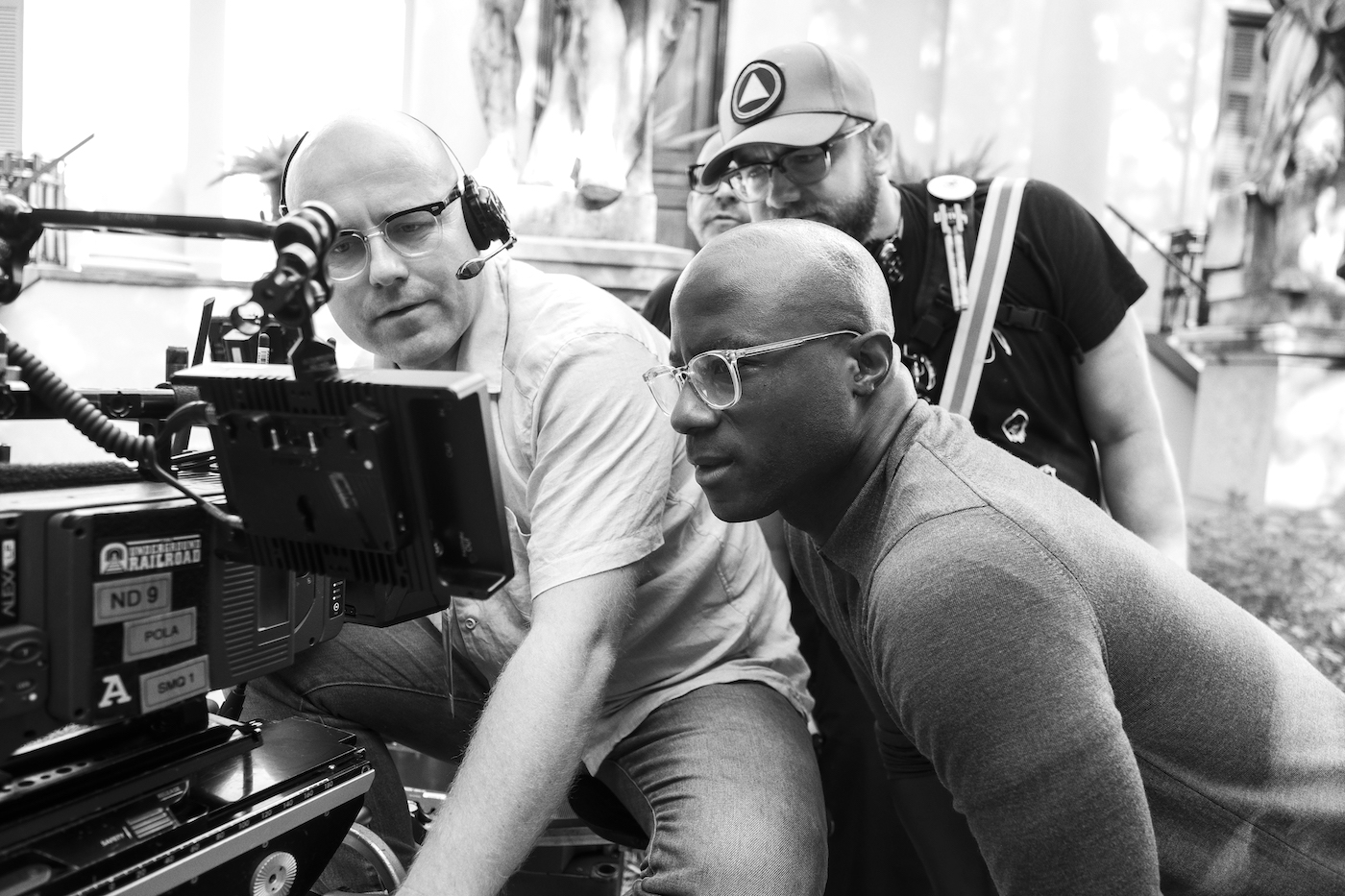
The Underground Railroad: Local 600 Crew
Director of Photography: James Laxton, ASC
A-Camera Operator/Steadicam: Jarrett Morgan, SOC
A-Camera 1st AC: Alan Newcomb
A-Camera 2nd AC: Callie Moore
B-Camera Operator/Steadicam: Matthew A. Petrosky, SOC, Ramon Engle, SOC
B-Camera 1st AC: Warren “War Dog” Brace
B-Camera 2nd AC: Chris Dawson
DIT: Ryland Jones
Loader: Dumaine Babcock
Utilities: Brody Docar, Beau Bellanich, Becca Thompson
Still Photographers: Atsushi Nishijima, Kyle Kaplan
Publicist: Denise Godoy Gregarek
